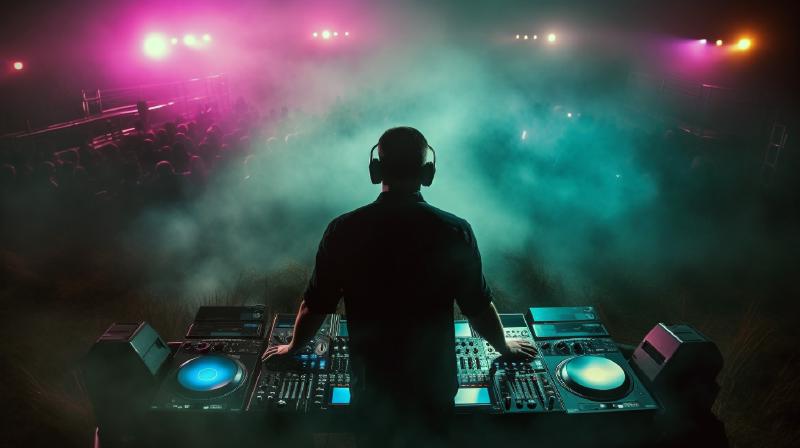Welcome to the exhilarating world of Electronic Dance Music (EDM)! If you’re an aspiring artist or musician eager to dive into this genre, you’ve landed at the perfect spot. In this post, we’ll demystify EDM by breaking down its core elements, delving into its rich history, and highlighting some iconic tracks that have shaped the genre. To round it off, we’ll touch upon the cutting-edge tools used in modern production studios, equipping you with the knowledge to kickstart your EDM journey.
What is EDM?
EDM, short for Electronic Dance Music, is a broad term that encompasses a range of electronic music genres, primarily created for dancing at nightclubs, raves, and festivals. It’s produced using a combination of digital and analog equipment, often featuring synthesizers, drum machines, and processed samples. The sound is typically precise, full, and loud.
This music is designed for playback by DJs, who create seamless selections of tracks, known as a DJ mix, by transitioning from one recording to another. EDM producers also perform their music live in concert or festival settings, sometimes called a live PA.
A Brief History of EDM
EDM has its roots in the late 1970s and early 1980s, with the emergence of genres like disco, synth-pop, and electro. As technology advanced, artists began experimenting with new sounds and equipment, leading to the creation of various subgenres such as house, techno, and trance.
Notable EDM Tracks and Their Impact on the Genre
- Donna Summer - “I Feel Love” (1977): Produced by Giorgio Moroder, this track is considered a milestone in the development of electronic dance music. Its innovative use of the Moog synthesizer laid the foundation for disco, and later, house music.
2. Afrika Bambaataa & The Soulsonic Force - “Planet Rock” (1982): This groundbreaking track combined elements of electro, hip hop, and funk, making it a significant influence on the development of future EDM subgenres.
3. Inner City - “Good Life” (1988): A quintessential example of Detroit techno, this track brought the genre to mainstream audiences and helped establish techno as a dominant force in the EDM scene.
4. Daft Punk - “Around the World” (1997): This French duo’s track became an international hit and introduced many to the world of house music. The catchy, repetitive bassline and memorable music video made this track a classic.
5. Robert Miles - “Children” (1995): A pioneering track in the world of trance music, “Children” introduced a new melodic and emotional dimension to EDM, which would later influence the development of progressive and uplifting trance.
6. Skrillex - “Scary Monsters and Nice Sprites” (2010): This track played a key role in popularizing the dubstep genre, bringing it to mainstream audiences with its aggressive bass drops and innovative sound design.
Listening guide: As you listen to the tracks above, pay close attention to their evolution through changes in rhythm, melody, and sound design. Notice how early tracks like “I Feel Love” and “Planet Rock” lay the groundwork for electronic music with their innovative use of synthesizers and drum machines. Observe the growth of subgenres like house, techno, and trance through tracks like “Good Life” and “Children,” showcasing the increasing complexity and emotional depth of EDM. Finally, listen for the aggressive bass drops and cutting-edge sound design in tracks like “Scary Monsters and Nice Sprites,” which exemplify the modern direction of the genre. By focusing on these key attributes, you’ll gain a deeper appreciation for the development and diversity of Electronic Dance Music.
Creating EDM Today: Key Tools and Techniques
Today, EDM is typically created using Digital Audio Workstations (DAWs) and a combination of virtual instruments and plugins. Some popular DAWs for EDM production include Ableton Live, FL Studio, and Logic Pro. Producers also utilize virtual instruments such as Serum, Massive, and Sylenth1, along with plugins like iZotope Ozone for mastering.
In Conclusion
EDM is a diverse and still evolving genre that has continued to captivate audiences around the world. As a new artist or musician, exploring the many subgenres and styles within EDM can provide endless inspiration and opportunities for creative expression. By leveraging modern tools like DAWs, virtual instruments, and plugins, you can bring your unique sound to life and immerse yourself in the electrifying world of Electronic Dance Music!
If this spiked your interest and you want to listen to more recent music, check out Activ8te’s tracks on Bandcamp.
